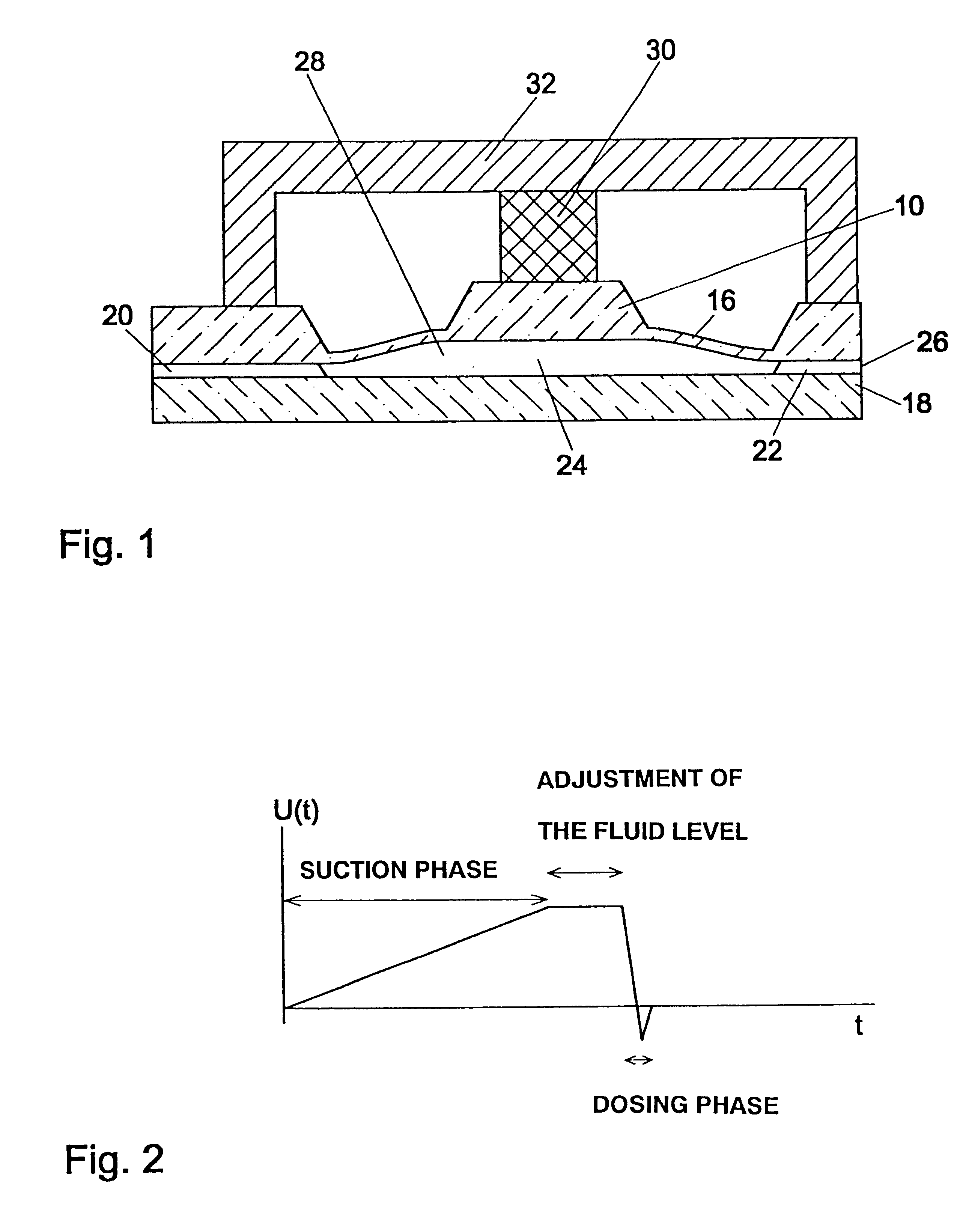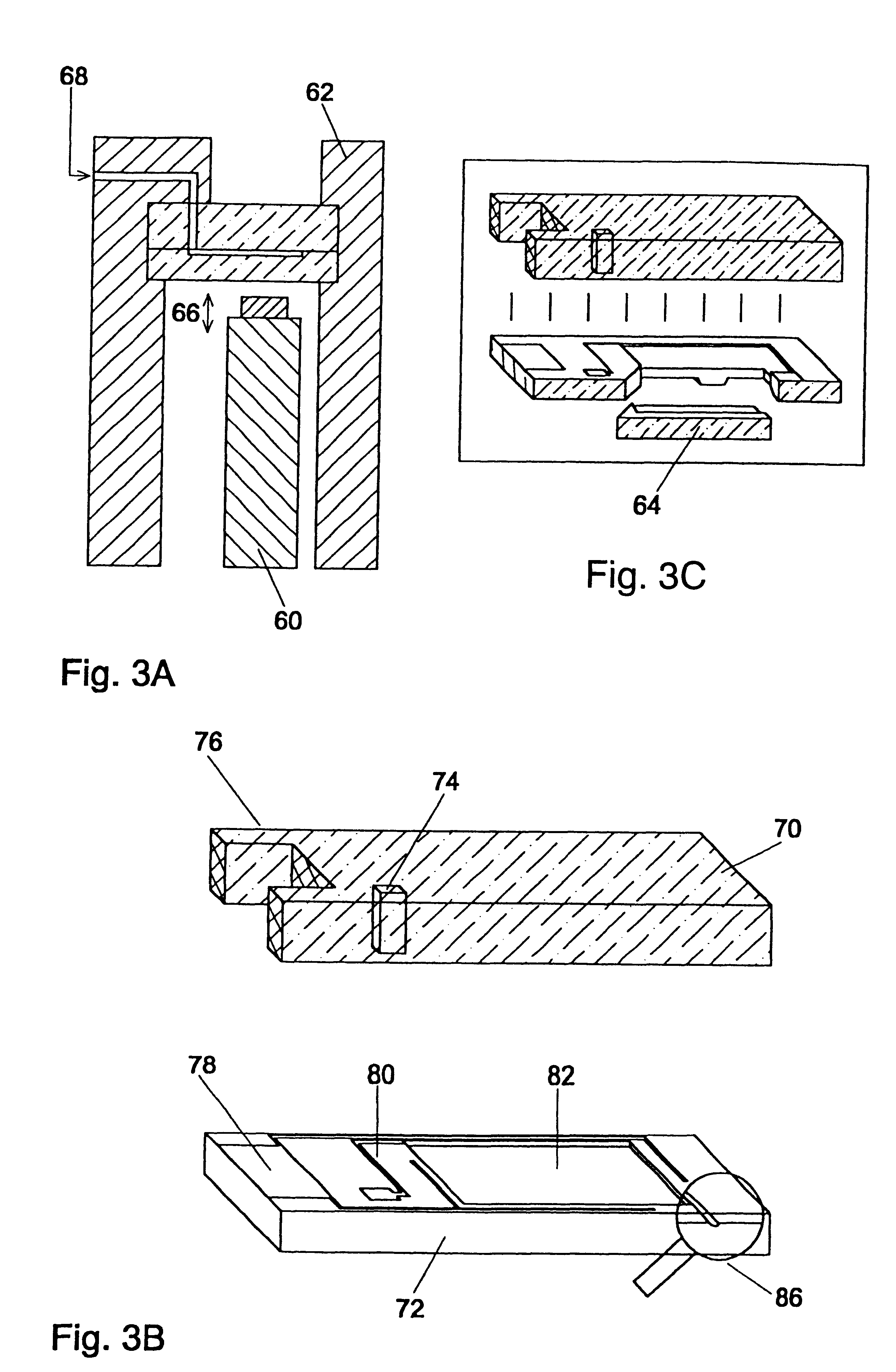Microdosing device
a microdosing device and microdosing technology, which is applied in the direction of positive displacement liquid engines, laboratory glassware, instruments, etc., can solve the problems of limited dosing accuracy in the case of smaller volumes, only possible drop generation in a very limited viscosity range, and high dosing accuracy
- Summary
- Abstract
- Description
- Claims
- Application Information
AI Technical Summary
Benefits of technology
Problems solved by technology
Method used
Image
Examples
Embodiment Construction
FIG. 1 shows a possible embodiment of the microdosing device according to the present invention, which is particularly suitable for producing the dosing element by means of semiconductor-technological methods. In the embodiment shown, the media displacer 10 is realized as a stiffened membrane which is etched in silicon. The displacer structure is produced by means of anisotropic KOH etching which results in the trapezoidal recesses defining the membrane 16. In addition to a stiffened membrane, it is also possible to use a non-stiffened membrane.
In the embodiment of the present invention shown in FIG. 1, the displacer structure 10 is connected to a Pyrex glass plate 18 by means of anodic bonding. In the preferred embodiment, recesses are provided in the silicon wafer in which the displacer structure 10 is defined, the recesses defining a reservoir channel 20, a nozzle channel 22 and a pressure chamber 24. The nozzle channel 22 is in fluid communication with an outlet opening 26, whic...
PUM
 Login to View More
Login to View More Abstract
Description
Claims
Application Information
 Login to View More
Login to View More - R&D
- Intellectual Property
- Life Sciences
- Materials
- Tech Scout
- Unparalleled Data Quality
- Higher Quality Content
- 60% Fewer Hallucinations
Browse by: Latest US Patents, China's latest patents, Technical Efficacy Thesaurus, Application Domain, Technology Topic, Popular Technical Reports.
© 2025 PatSnap. All rights reserved.Legal|Privacy policy|Modern Slavery Act Transparency Statement|Sitemap|About US| Contact US: help@patsnap.com



